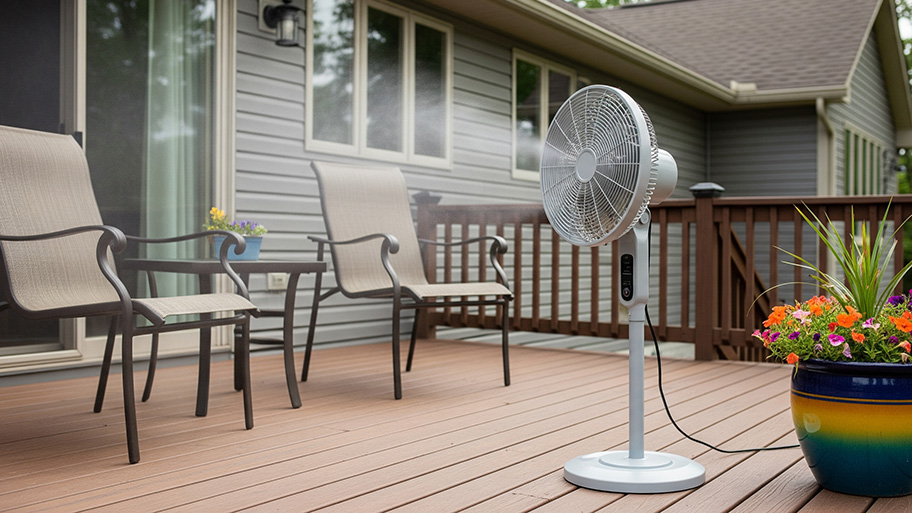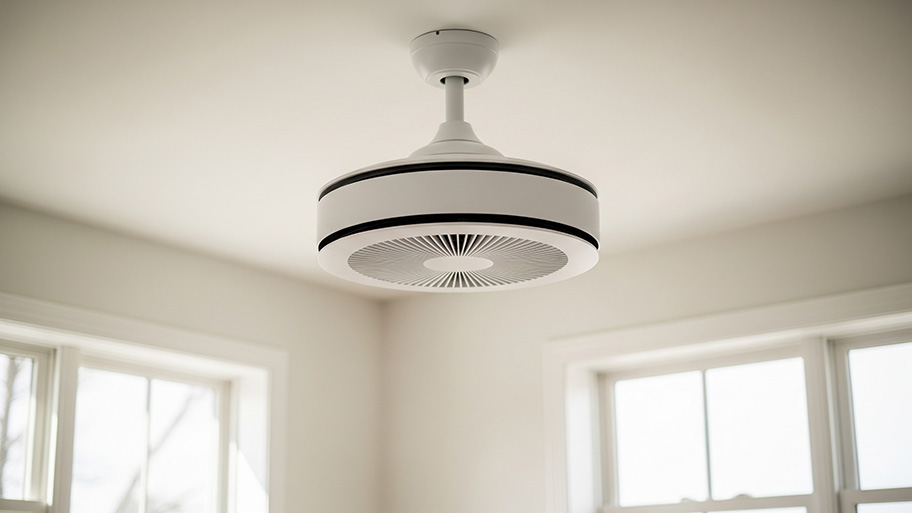
If your ceiling fan stops working due to a bad motor or broken pull chain, here’s what you can expect to pay to get it fixed.
Blow yourself away with your DIY skills


From covered patios to living rooms, fans keep you cool in the hottest of months. Plus, installing a new fan is a stylish and functional update to any room. If you plan to DIY ceiling fan installation, follow the steps below for a seamless experience.
First and foremost, turn off the power to the room where you’re replacing the fan. Then, go to your circuit box and turn off the breaker for the room. Double-check that the power is completely off before any work begins.

After the power is off, it’s time to find the screws that mount the fan's canopy to the ceiling. Generally speaking, the screws are on the sides of the canopy. However, some are within slots on the sides too. Find these screws and unscrew them using the screwdriver.
Once these screws are loose, be aware the fan is no longer completely attached to the ceiling. In this case, grab the base and pull it gently to come off of the mount.
When you unscrew the canopy from the ceiling, the old fan will be in limbo and you might need a hand on it to keep it secure. You’ll want to disconnect the wires to thoroughly release the old fan from the ceiling at this time.
A second hand is always a wise idea at this point to help you handle the ceiling fan while you’re standing on the step ladder. Then, while a friend is helping you hold up the base, you can get to work untwisting the caps on the wires to break the wired connection completely. At this point, the old fan should be ready to be disregarded.
It’s essential to get rid of the old bracket to make room for the new bracket. To remove the bracket, you need to unscrew the two large screws in the mount. Be sure to save these screws to use for the new bracket.
Your new ceiling fan will come with a bracket you should install most of the time. This specific bracket is for your ceiling fan’s weight and particular needs, and it works to ensure that you balance your ceiling fan properly. To install the new bracket, you simply wind the mounting piece into the ceiling.
Once it’s in, you use the screws from the old bracket, then tighten them until they’re secure with your screwdriver. When the new bracket is tight, you’re good to start unboxing a ceiling fan.
Get excited because you finally get to unbox the ceiling fan you’ve been waiting to install. When you take the fan out of the box, you’ll notice the wires coming out from the motor that will later be connected. These wires are likely going to be way longer than you need.
If your ceiling is 9 feet tall or higher, you’ll need to use an extender pole. You thread the wires through the pole before cutting them. If your ceiling fan is less than 9 feet, it should be flush with the wall. Grab your wire cutters and trim the wires to a short length, exposing the wire ends.
After trimming the wires to a reasonable length (enough to be shoved back into the ceiling), you’re going to want to connect the wires. Typically, the same colors connect to matching colors as a general rule of thumb.
Black wire connects to black wire
White wire connects to white or other neutral wire
Green wire connects to copper wire (sometimes this wire is green)
Blue wire (occasionally striped) connects to red or other colored wire
Once the wires are connected, you should cap the connected wires and then use electrical tape to bundle them together before placing them into the ceiling.

Next, after connecting the wires, you need to screw in the motor to the ceiling. Screw the ceiling fan into the previously mounted bracket using a screwdriver. Generally, the manufacturer's instructions will show where your specific screws are on your new fan.
Depending on the ceiling fan you bought, your light piece (the thing that connects your bulbs to the fixture) either comes pre-attached or not. If it’s not attached, you typically attach the matching colored wires then screw in the light piece.
Let out a deep sigh of relief because you’ve done it. Now’s the easy part—install the blades of your fan. Each is either screwed in using a screwdriver or clicks in with a specific mechanism.
Lastly, screw in the correct light bulbs designated on the manufacturer’s instructions. Then, flip the circuit breaker back on. That’s it! If your ceiling fan isn’t working at this point or installation didn’t go as planned, call a local electrical company for help.
Before moving forward, it’s important to note that, for your safety, a professional electrician should install a ceiling fan in a room without existing wiring or junction box.
Also, if you are new to DIY projects and don’t have any electrical experience, you also might consider letting a pro handle this task for you.
If you plan to hire a ceiling fan expert, then the labor cost of ceiling fan installation will be anywhere from $50 to $600.
From average costs to expert advice, get all the answers you need to get your job done.

If your ceiling fan stops working due to a bad motor or broken pull chain, here’s what you can expect to pay to get it fixed.

Discover the cost to install a ceiling fan, including labor, materials, and tips to save. Learn what impacts your price and how to budget for your project.

Removing a ceiling fan is an easy task that any handy DIYer can tackle. Follow the five steps in this guide to learn how to remove a ceiling fan.

A 3-blade vs. 5-blade ceiling fan varies in design and function. Learn the differences between them so you know which is best for your space.

It's time to cool off! Learn 10 ways to make your room cool without an air conditioner in this informational fan hack guide.

Are traditional ceiling fans slowly becoming a thing of the past? The famously quiet and efficient bladeless fans are now appearing right above our heads.